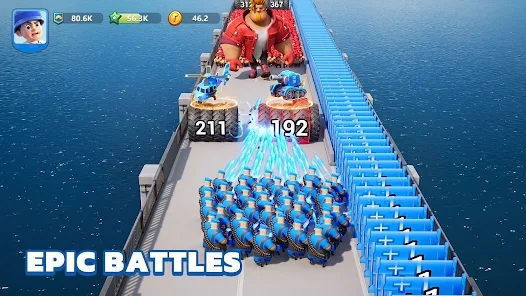Why City Building Games Are Reimagining the Future of PC Gaming
In a world where pixelated landscapes and grand aspirations blend into a warm digital embrace, city building games have emerged as architects of both imagination and innovation. Take a stroll through these vibrant realms and you’ll discover layers of meaning stitched into each virtual brick and mortar. Such games are not just entertainment; they are an enchanting bridge to the future of PC gaming. As we delve into this captivating genre, let’s unravel how these virtual cities are reshaping our understanding of gaming.
The Essence of City Building Games
City building games escort players into a realm where every decision, from resource management to urban planning, impacts the evolving world that unfolds before them. Imagine being not merely a player but a **visionary**, a creator crafting an intricate web of civilization. The sense of ownership is profound, each city pulsating with life, echoing the players’ choices.
Crafting Reality: A Symphony of Creativity
At the heart of city building lies creativity, beckoning players to unleash their imagination. Be it a sprawling metropolis or a quaint town, every detail matters—street names, parks, and even the placement of a solitary tree bear significance. This undertaking often feels akin to artistry itself, transforming a mere game into a canvas where dreams and aspirations intertwine.
The Influence of Community Feedback
As these games proliferate, player communities offer critical feedback, much like an intricate **dance of collaboration**. Game developers listen, adapt, and innovate, fostering a mutualistic relationship that fuels the evolution of city building experiences. The power of community feedback cannot be underestimated; it shapes environments that resonate with players’ desires.
Technological Innovations Driving Change
Advancements in technology serve as a bloodstream infusing vigor into city building games. The graphics, now breathtakingly realistic, draw you into realms where heights and depths matter, where the distinction between virtual and actual blurs. Among these innovations, **AI-driven simulations** stand out, creating dynamic, responsive worlds that evolve based on player interactions.
Learning from Nature: The Biology of Cities
Just as nature organizes itself into kingdoms, cities too have their classifications, their own ecosystems. The complex interplay of communities, economies, and cultures mirrors biological systems whereby species coexist and adapt. City building games encourage us to ponder this biological tapestry, allowing players to experiment with urban jungles reminiscent of the great outdoors.
Classic vs. Modern: The Evolution of Gameplay
Looking back, we can see both **classic and modern** city building games have invigorated the genre. Titles like *SimCity* laid the groundwork, while newer entrants—like *Cities: Skylines*—challenge the status quo. What’s striking is how these games blend nostalgia with modern features, crafting a rich tapestry of experiences.
Challenges in Game Design: Balancing Realism and Playability
As developers venture forth, they grapple with a delicate balance between realism and playability. The desire for immersive mechanics must align with player enjoyment. Too much realism might intimidate; too much simplification risks losing depth. It’s a nuanced dance that requires skillful choreography.
Table: Key Features of Top City Building Games
| Game Title | Key Features | Unique Aspect |
|---|---|---|
| *SimCity* | Resource management, zoning | Classic architecture |
| *Cities: Skylines* | Dynamic traffic simulation, mods | Community-driven content |
| *Anno 1800* | Trade routes, historical contexts | Blend of strategy and simulation |
The Appeal of Sandbox Creativity
The allure of **sandbox gameplay** is potent—freedom reigns supreme. Players are not confined to a linear story; they embark on their own journeys, constructing their cities as they see fit. This gives rise to creativity without boundaries, culminating in breathtaking virtual skylines that exist solely in the imaginations of their creators.
Environmental Responsibility: A Virtual Overview
Amid rising environmental concerns in our own world, city building games are nudging players toward **sustainable thinking**. Choices in these games imply real-world consequences, educating players about the importance of ecological preservation through resource management, waste reduction, and sustainable city planning. They serve as a metaphorical mirror reflecting the world’s urgency.
The Future of City Building Games
As we gaze into the crystal ball, the future looks vibrant. The impending rise of virtual and augmented realities holds promising potential. Looming on the horizon are opportunities for collaborative building, where players come together to create sprawling cities, united in purpose and creativity. City building games are not just games, but a testament to the ingenuity of human interaction.
Conclusion: More than Just a Game
So here we are, at a crossroads where city building games propel us into new dimensions of **creativity, collaboration**, and **education**. They transcend the mere scope of entertainment; they become landscapes of possibility that inspire not just virtual architects, but thinkers, innovators, and custodians of future cities. As players sculpt their dream cities brick by pixelated brick, they are not merely imagining the future—they are creating it.
In this kaleidoscope of digital expression, city building games are indeed reimagining the future of PC gaming, marrying the essence of creativity with the art of construction. So grab your virtual blueprints and ignite your imagination—there’s a city waiting to be built!



